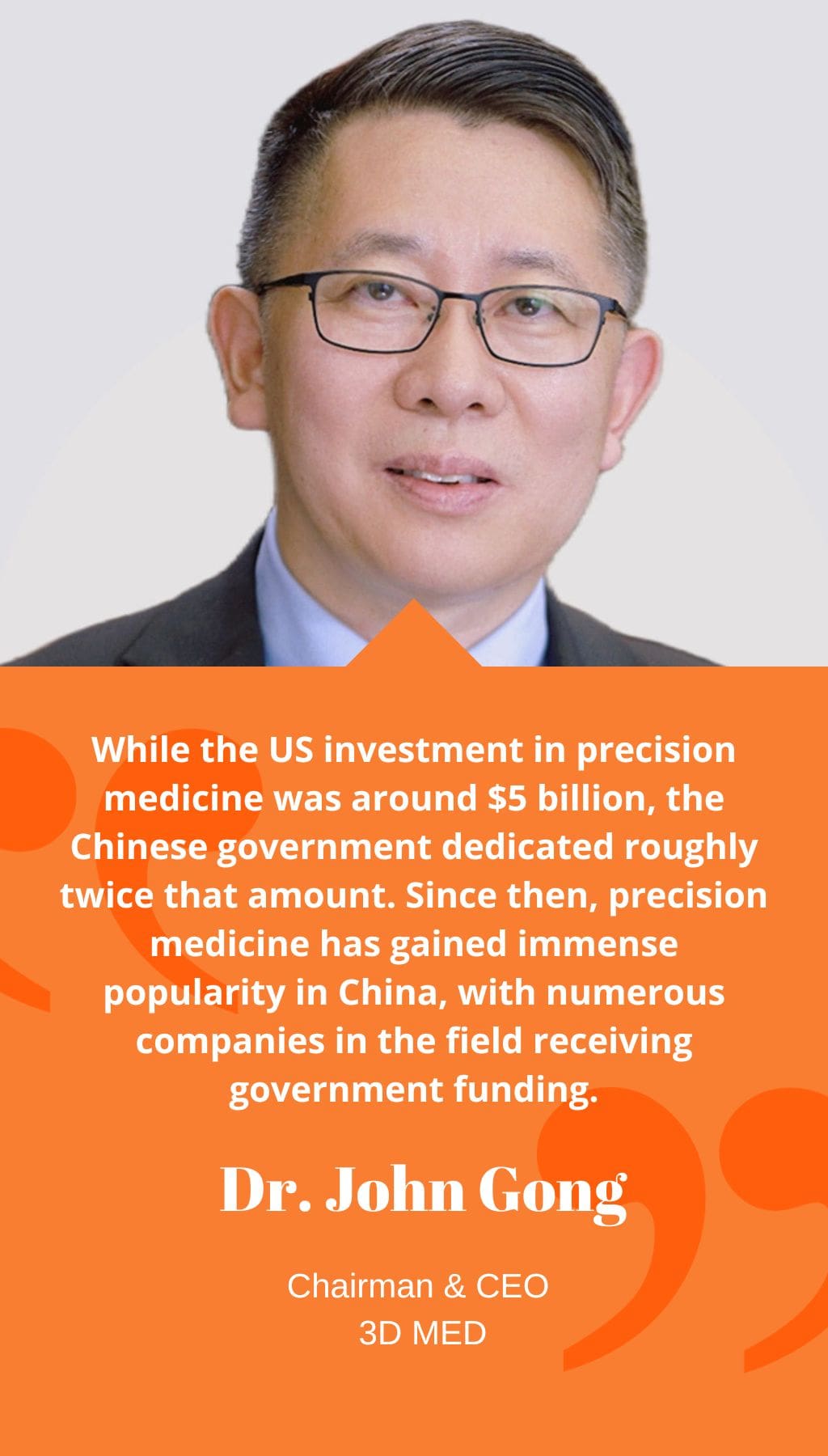
- China | 17 June 2018

3D Med was founded in 2010 and has emerged as a leader in precision care. Could you provide a brief background of the company and its mission?
Certainly. 3D Med started as a small team primarily involved in supporting research activities. Over time, we expanded our focus to include diagnosis and drug development. Our core mission revolves around contributing to the fight against cancer, which has become increasingly prevalent in China. With over 4-5 million new cancer patients each year in the country, we recognize the crucial role of genomic information in understanding and diagnosing cancer accurately. Proper diagnosis is essential for effective treatment, and this principle serves as the foundation of 3D Med’s mission. Fortunately, our company’s direction aligns with the national strategy that promotes the biopharmaceutical industry and precision medicine. This alignment has attracted significant interest from venture capital funds, enabling our rapid growth. Today, we have a team of over 400 professionals and six drugs in the clinical stage. Additionally, this year, we received funding from the largest government fund available.
How has the attitude towards precision medicine evolved since the inception of 3D Med?
The attitude towards precision medicine has witnessed significant evolution since our company’s inception. In 2015, former President Obama announced a precision medicine initiative in the United States. China responded swiftly, launching its own version just four months later. However, while the US investment in precision medicine was around $5 billion, the Chinese government dedicated roughly twice that amount. Since then, precision medicine has gained immense popularity in China, with numerous companies in the field receiving government funding. There is also a substantial availability of venture capital funds in China, which played a pivotal role in our growth. Although our official diagnosis business commenced in 2015, our accumulated knowledge and experience enabled us to present a compelling case to venture capital funds, allowing us to start our operations ahead of many others.
3D Med is among the top three companies in China for patient diagnosis. Could you elaborate on the importance of data in helping the company achieve this distinction?
At 3D Med, we believe that diagnosis is the starting point that generates crucial data. This data, in turn, guides us in the development of effective drugs. This underlying logic forms the basis of our business model. Patient and genomic data are extensive and require substantial storage space. However, with proper analysis, this information proves invaluable for accurate diagnosis and determining the most suitable medicines for individual patients. Data plays a critical role in our ability to achieve excellence in patient diagnosis and personalized care.
Can you provide an update on the status of 3D Med’s collaboration with Alphamab regarding the asset under development?
Our collaboration with Alphamab focuses on two areas of antibody research: PD-1 and PD-L1, as well as CAR-T therapy. Both PD-1 and PD-L1 have demonstrated benefits for patients, and CAR-T therapy offers personalized treatment for specific tumors, although it comes at a significant cost. Our collaboration with Alphamab centers around a PD-L1 antibody. In the United States, the FDA has approved five PD-1 and PD-L1 antibodies, and more than ten are in the clinical stage in China. We are the only Chinese company conducting global clinical trials with an arm in Japan. If everything progresses as expected, our drug will soon complete Phase 1 trials and advance to Phase 2 and 3. Initial data suggests that it is a safe compound with a strong pharmacokinetic profile, and preliminary efficacy data is highly positive. Based on this success, we plan to scale up clinical trials in China, the US, and Japan. We anticipate bringing the compound to market within two years, at which point we will consider an IPO listing.
How does your compound differ from others under development in its class?
Unlike other approved PD-1 and PD-L1 antibodies and those currently in clinical development, our compound is administered subcutaneously rather than through injection into veins or as an IV fusion. This distinction makes our PD-L1 antibody the only one of its kind in the world thus far.














